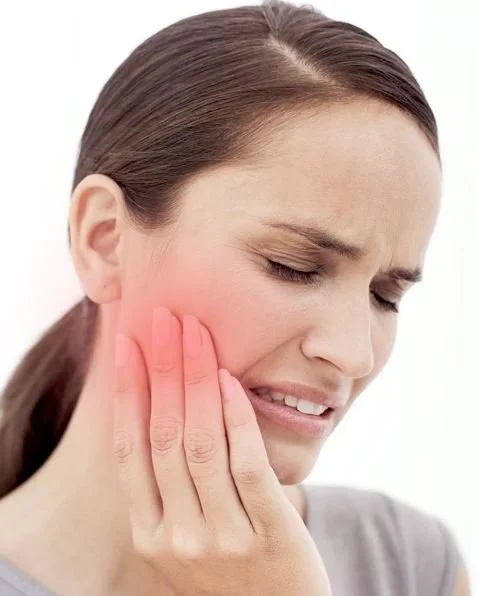Understanding TMJ Pain: Causes, Symptoms, and Treatment Options
Temporomandibular Joint (TMJ) pain is a common yet often misunderstood condition that affects millions of people worldwide. The temporomandibular joint connects the jawbone to the skull, enabling movements necessary for chewing, speaking, and yawning. When this joint or the surrounding muscles become dysfunctional, it can result in significant discomfort and a range of other symptoms collectively referred to as temporomandibular disorders (TMD). This article aims to provide a comprehensive overview of TMJ pain, exploring its causes, symptoms, diagnosis, and treatment options.
What Causes TMJ Pain?
TMJ pain can arise from various factors, making it a complex condition to diagnose and treat. Some of the common causes include:
Muscle Tension and Stress: Chronic stress can lead to clenching or grinding of the teeth (bruxism), which exerts excessive pressure on the TMJ and surrounding muscles.
Jaw Injury: Trauma to the jaw, head, or neck can damage the TMJ or the muscles controlling jaw movement, leading to pain and dysfunction.
Arthritis: Degenerative or inflammatory forms of arthritis, such as osteoarthritis or rheumatoid arthritis, can affect the TMJ, causing pain and stiffness.
Dislocation or Misalignment: Displacement of the disc within the joint or misalignment of the jaw can interfere with the smooth movement of the TMJ, resulting in pain and limited function.
Genetic Factors: Some individuals may have a genetic predisposition to developing TMJ disorders, possibly due to inherited structural abnormalities or connective tissue disorders.
Symptoms of TMJ Pain
TMJ disorders manifest through a variety of symptoms that can range from mild to severe. These symptoms may include:
Jaw Pain or Tenderness: Pain in the jaw joint or surrounding muscles is a hallmark symptom of TMJ disorders. This pain may be constant or intermittent and can worsen with jaw movement.
Limited Jaw Movement: Individuals with TMJ disorders often experience difficulty opening or closing their mouths fully. This limitation can interfere with eating, speaking, and other daily activities.
Clicking or Popping Sounds: Some people with TMJ disorders report hearing clicking, popping, or grating sounds when moving their jaw. These sounds may or may not be accompanied by pain.
Ear Pain or Tinnitus: TMJ disorders can cause referred pain to the ears, leading to earaches or ringing in the ears (tinnitus).
Headaches and Migraines: Chronic headaches or migraines are common in individuals with TMJ disorders, often resulting from muscle tension and jaw clenching.
Facial Pain: Pain can radiate from the jaw to other areas of the face, including the cheeks, temples, and neck.
Diagnosing TMJ Pain
Diagnosing TMJ disorders requires a thorough evaluation by a healthcare professional, typically a dentist or an oral and maxillofacial specialist. The diagnostic process may include:
Medical History: A detailed medical history helps identify potential risk factors and underlying conditions contributing to TMJ pain.
Physical Examination: The clinician will examine the jaw, face, and neck, checking for tenderness, clicking sounds, and range of motion.
Imaging Studies: X-rays, CT scans, or MRI scans may be used to visualize the structure of the TMJ and identify any abnormalities, such as disc displacement or joint degeneration.
Dental Examination: A dental assessment can identify issues like malocclusion (misalignment of teeth) or bruxism that may contribute to TMJ pain.
Treatment Options for TMJ Pain
The treatment of TMJ disorders varies based on the underlying cause and severity of symptoms. A combination of self-care practices, medical interventions, and lifestyle modifications can help manage TMJ pain effectively. Common treatment options include:
Self-Care Practices: Simple self-care measures can significantly reduce TMJ pain. These include applying ice or heat packs to the affected area, performing gentle jaw exercises, and avoiding hard or chewy foods.
Medications: Over-the-counter pain relievers, such as ibuprofen or acetaminophen, can help alleviate mild to moderate TMJ pain. In some cases, muscle relaxants or prescription pain medications may be necessary.
Physical Therapy: Physical therapy can improve jaw function and reduce pain through targeted exercises and manual therapy techniques. Therapists may also use ultrasound, electrical stimulation, or other modalities to enhance treatment outcomes.
Dental Appliances: Custom-made dental appliances, such as splints or mouthguards, can help reduce teeth grinding and clenching, thereby alleviating pressure on the TMJ.
Lifestyle Modifications: Stress management techniques, such as relaxation exercises, yoga, or meditation, can help reduce muscle tension and prevent TMJ pain. Maintaining good posture and avoiding habits like gum chewing or nail-biting are also beneficial.
Injections: In some cases, corticosteroid injections or Botox injections may be administered to reduce inflammation and muscle spasms in the TMJ area.
Surgical Interventions: Surgery is usually considered a last resort for treating severe TMJ disorders that do not respond to conservative treatments. Surgical options may include arthrocentesis, arthroscopy, or open joint surgery to repair or replace the damaged joint.
Conclusion
TMJ pain is a multifaceted condition that requires a comprehensive approach to diagnosis and treatment. Understanding the underlying causes and recognizing the symptoms are crucial steps in managing this condition effectively. With appropriate medical care and self-management strategies, individuals with TMJ disorders can achieve significant relief from pain and improve their quality of life. If you suspect you have a TMJ disorder, it is essential to seek professional evaluation and treatment to address the issue promptly and prevent further complications.

